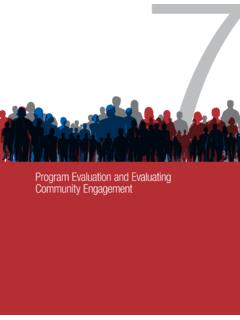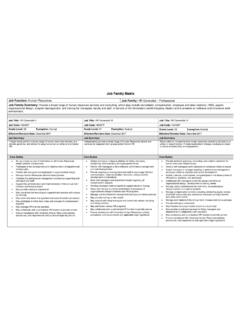Transcription of Evaluating Large Language Models Trained on Code
1 Evaluating Large Language Models Trained on Code Mark Chen * 1 Jerry Tworek * 1 Heewoo Jun * 1 Qiming Yuan * 1 Henrique Ponde de Oliveira Pinto * 1. Jared Kaplan * 2 Harri Edwards 1 Yuri Burda 1 Nicholas Joseph 2 Greg Brockman 1 Alex Ray 1 Raul Puri 1. Gretchen Krueger 1 Michael Petrov 1 Heidy Khlaaf 3 Girish Sastry 1 Pamela Mishkin 1 Brooke Chan 1. Scott Gray 1 Nick Ryder 1 Mikhail Pavlov 1 Alethea Power 1 Lukasz Kaiser 1 Mohammad Bavarian 1. Clemens Winter 1 Philippe Tillet 1 Felipe Petroski Such 1 Dave Cummings 1 Matthias Plappert 1. Fotios Chantzis 1 Elizabeth Barnes 1 Ariel Herbert-Voss 1 William Hebgen Guss 1 Alex Nichol 1 Alex Paino 1. Nikolas Tezak 1 Jie Tang 1 Igor Babuschkin 1 Suchir Balaji 1 Shantanu Jain 1 William Saunders 1. [ ] 14 Jul 2021. Christopher Hesse 1 Andrew N. Carr 1 Jan Leike 1 Josh Achiam 1 Vedant Misra 1 Evan Morikawa 1. Alec Radford 1 Matthew Knight 1 Miles Brundage 1 Mira Murati 1 Katie Mayer 1 Peter Welinder 1.
2 Bob McGrew 1 Dario Amodei 2 Sam McCandlish 2 Ilya Sutskever 1 Wojciech Zaremba 1. Abstract 1. Introduction Scalable sequence prediction Models (Graves, 2014;. Vaswani et al., 2017; Child et al., 2019) have become a We introduce Codex, a GPT Language model fine- general-purpose method for generation and representation tuned on publicly available code from GitHub, learning in many domains, including natural Language pro- and study its Python code-writing capabilities. cessing (Mikolov et al., 2013; Sutskever et al., 2014; Dai &. A distinct production version of Codex powers Le, 2015; Peters et al., 2018; Radford et al., 2018; Devlin GitHub Copilot. On HumanEval, a new evalua- et al., 2018), computer vision (Van Oord et al., 2016; Menick tion set we release to measure functional correct- & Kalchbrenner, 2018; Chen et al., 2020; Bao et al., 2021), ness for synthesizing programs from docstrings, audio and speech processing (Oord et al.)
3 , 2016; 2018; Dhari- our model solves of the problems, while wal et al., 2020; Baevski et al., 2020), biology (Alley et al., GPT-3 solves 0% and GPT-J solves Fur- 2019; Rives et al., 2021), and even across multiple modali- thermore, we find that repeated sampling from the ties (Das et al., 2017; Lu et al., 2019; Ramesh et al., 2021;. model is a surprisingly effective strategy for pro- Zellers et al., 2021). More recently, Language Models have ducing working solutions to difficult prompts. Us- also fueled progress towards the longstanding challenge ing this method, we solve of our problems of program synthesis (Simon, 1963; Manna & Waldinger, with 100 samples per problem. Careful investiga- 1971), spurred by the presence of code in Large datasets tion of our model reveals its limitations, including (Husain et al., 2019; Gao et al., 2020) and the resulting pro- difficulty with docstrings describing long chains gramming capabilities of Language Models Trained on these of operations and with binding operations to vari- datasets (Wang & Komatsuzaki, 2021).
4 Popular Language ables. Finally, we discuss the potential broader modeling objectives like masked Language modeling (Devlin impacts of deploying powerful code generation et al., 2018) and span prediction (Raffel et al., 2020) have technologies, covering safety, security, and eco- also been adapted to train their programming counterparts nomics. CodeBERT (Feng et al., 2020) and PyMT5 (Clement et al., 2020). Similarly, our early investigation of GPT-3 (Brown et al., 2020) revealed that it could generate simple programs from *. Python docstrings. While rudimentary, this capability was Equal contribution 1 exciting because GPT-3 was not explicitly Trained for code OpenAI, San Francisco, California, USA. 2. Anthropic AI, San Francisco, California, USA. Work per- generation. Given the considerable success of Large lan- formed while at OpenAI. guage Models in other modalities and the abundance of 3.
5 Zipline, South San Francisco, California, USA. Work per- publicly available code, we hypothesized that a specialized formed while at OpenAI. GPT model, called Codex, could excel at a variety of coding Correspondence to: Mark Chen tasks. This paper describes several early Codex Models , Jerry Tworek Heewoo Jun <hee- Qiming Yuan whose descendants power GitHub Copilot and the Codex Models in the OpenAI API. Evaluating Large Language Models Trained on Code generate at least one correct function for of the prob- lems. This result suggests that accurate code samples can be selected via heuristic ranking instead of fully Evaluating each sample, the latter of which may not be possible or prac- tical in deployment. Indeed, we find that the sample with highest mean log-probability passes unit tests for of the problems. We conclude by discussing the limitations and potential broader impacts of these Codex Models and of increasingly powerful code generating Models more generally.
6 2. Evaluation Framework Figure 1. Pass rates of our Models on the HumanEval dataset as a In this section, we discuss the details of our evaluation function of model size. When a single sample is generated for each framework. We begin by defining the pass@k metric, and problem, GPT-12B solves no problems, but Codex (fine-tuned explain its advantages over standard match-based metrics. on code) solves of the problems, and Codex-S (further Next, we describe the dataset of hand-written problems, fine-tuned on correctly implemented standalone functions) solves called HumanEval, which we created in order to bench- of the problems. From here, further gains can be realized by mark our Models . Finally, we discuss the sandbox environ- generating 100 samples per problem and selecting the sample with ment we used to safely execute model-generated code. the highest mean log-probability ( solved) or by selecting the sample that passes the unit tests ( solved).
7 All samples Functional Correctness are generated with temperature Generative Models for code are predominantly benchmarked In this work, we focus on the task of generating stan- by matching samples against a reference solution, where dalone Python functions from docstrings, and evaluate the the match can be exact or fuzzy (as in BLEU score). How- correctness of code samples automatically through unit ever, recent work has surfaced deficiencies in match-based tests. This is in contrast to natural Language generation, metrics for code. For instance, Ren et al. (2020) finds that where samples are typically evaluated by heuristics or by BLEU has problems capturing semantic features specific human evaluators. To accurately benchmark our model, to code, and suggests several semantic modifications to the we create a dataset of 164 original programming problems score. with unit tests. These problems assess Language compre- More fundamentally, match-based metrics are unable to ac- hension, algorithms, and simple mathematics, with some count for the Large and complex space of programs function- comparable to simple software interview questions.
8 We ally equivalent to a reference solution. As a consequence, release this data along with an evaluation framework at recent works in unsupervised code translation (Lachaux et al., 2020) and pseudocode-to-code translation (Kulal et al., To solve a problem in our test set, we generate multiple 2019) have turned to functional correctness instead, where samples from the Models , and check if any of them pass the a sample is considered correct if it passes a set of unit tests. unit tests. With just a single sample, a 12B parameter Codex We argue that this metric should be applied to docstring- solves of these problems, and a 300M parameter conditional code generation as well. Codex solves of these problems. In contrast, the 6B Perhaps the most convincing reason to evaluate functional parameter GPT-J (Wang & Komatsuzaki, 2021) achieves correctness is that it is used by human developers to judge on the same dataset, while all GPT Models achieve code.
9 A framework known as test-driven development dic- near 0%. To improve our model's performance at the task of tates that software requirements be converted into test cases function synthesis from docstrings, we fine-tune Codex on before any implementation begins, and success is defined standalone, correctly implemented functions. The resulting by a program that passes these tests. While few organiza- model, Codex-S, solves of problems with a single tions employ full test-driven development, integration of sample. Figure 2 showcases problems of varying difficulty new code is usually dependent on creating and passing unit in our dataset, along with correct model generated solutions. tests. Real-world programming tasks often involve iterations of Kulal et al. (2019) evaluate functional correctness using approaches and bug fixes, which is approximated by gener- the pass@k metric, where k code samples are generated ating many samples from our Models and selecting one that per problem, a problem is considered solved if any sample passes all unit tests.
10 Within 100 samples, Codex-S is able to Evaluating Large Language Models Trained on Code Figure 2. Three example problems from the HumanEval dataset, where the probabilities that a single sample from Codex-12B passes unit tests are , , and The prompt provided to the model is shown with a white background, and a successful model-generated completion is shown in a yellow background. Though not a guarantee for problem novelty, all problems were hand-written and not programmatically copied from existing sources. Random problems and samples can be found in Appendix B. passes the unit tests, and the total fraction of problems def pass_at_k(n, c, k): solved is reported. However, computing pass@k in this """. way can have high variance. Instead, to evaluate pass@k, :param n: total number of samples we generate n k samples per task (in this paper, we :param c: number of correct samples :param k: k in use n = 200 and k 100), count the number of correct """.
![arXiv:0706.3639v1 [cs.AI] 25 Jun 2007](/cache/preview/4/1/3/9/3/1/4/b/thumb-4139314b93ef86b7b4c2d05ebcc88e46.jpg)

![arXiv:1301.3781v3 [cs.CL] 7 Sep 2013](/cache/preview/4/d/5/0/4/3/4/0/thumb-4d504340120163c0bdf3f4678d8d217f.jpg)
![@google.com arXiv:1609.03499v2 [cs.SD] 19 Sep 2016](/cache/preview/c/3/4/9/4/6/9/b/thumb-c349469b499107d21e221f2ac908f8b2.jpg)









